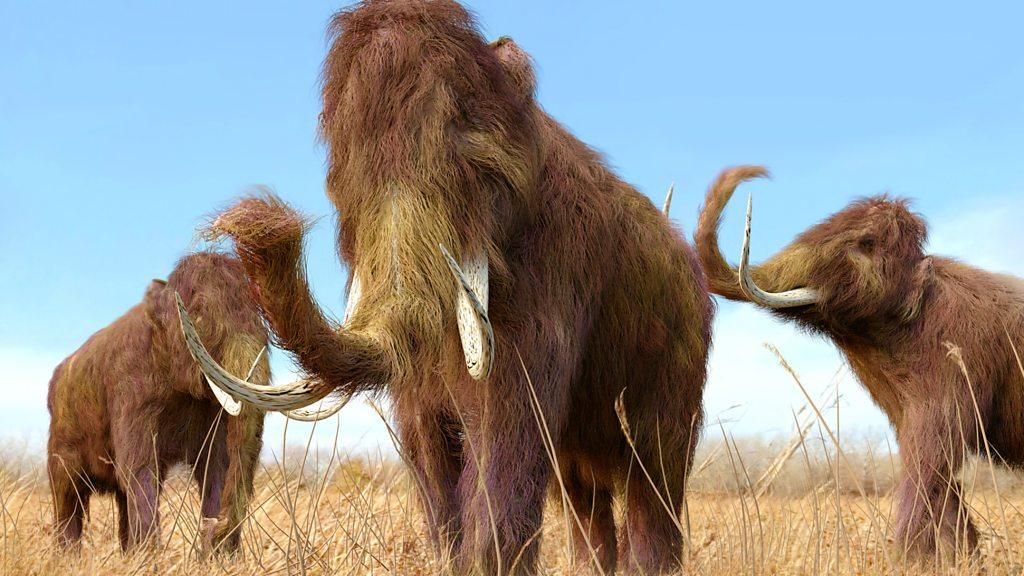Mammoth tusk haul seized by Chinese customs
- Published
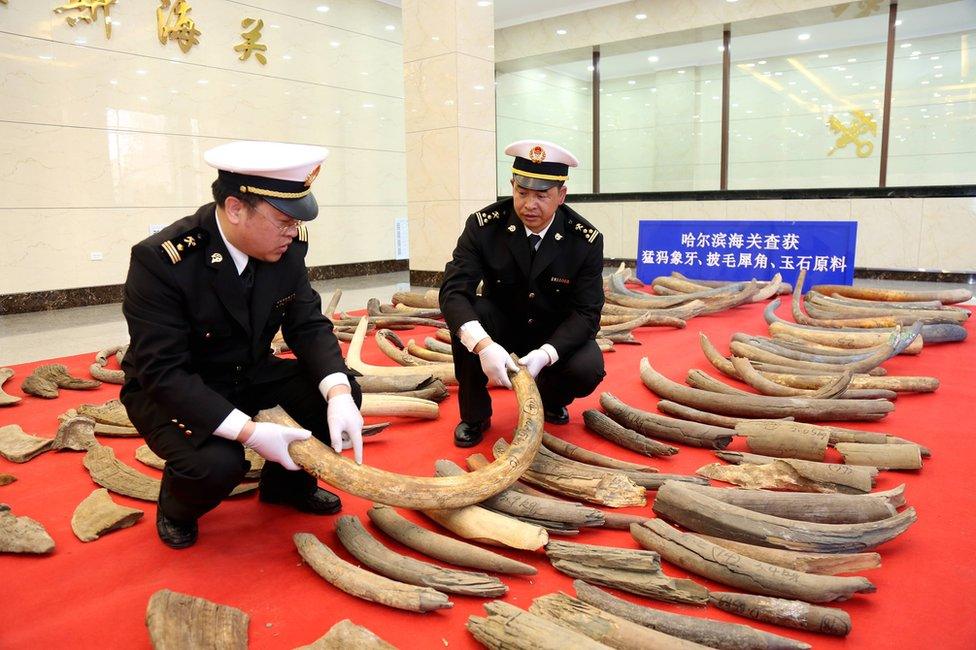
The haul of mammoth tusks, rhino horns and jade reportedly came from Russia
Chinese customs officers have seized more than a tonne of tusks from animals that have been extinct for thousands of years - mammoths.
State media are reporting that the massive haul came from Russia and was seized in north-east China in February.
The largest piece of mammoth ivory seized was more than 1.6m (5ft) long, a customs officer was quoted as saying, external.
There is no international ban on the trade but Chinese officials said the haul was not declared.
Millions of mammoths
The stockpile is part of a booming trade between Russia and China in ivory taken from the skeletons of mammoths found in the Siberian tundra. The effects of global warming in the Arctic has made it easier to collect tusks, external preserved in ice for thousands of years, researchers say.
More than 100 woolly mammoth tusks were seized at the port of Luobei in Heilongjiang province, in addition to 37 woolly rhino horn parts and more than a tonne of jade. They were hidden in concealed compartments in a truck, according to reports, external.
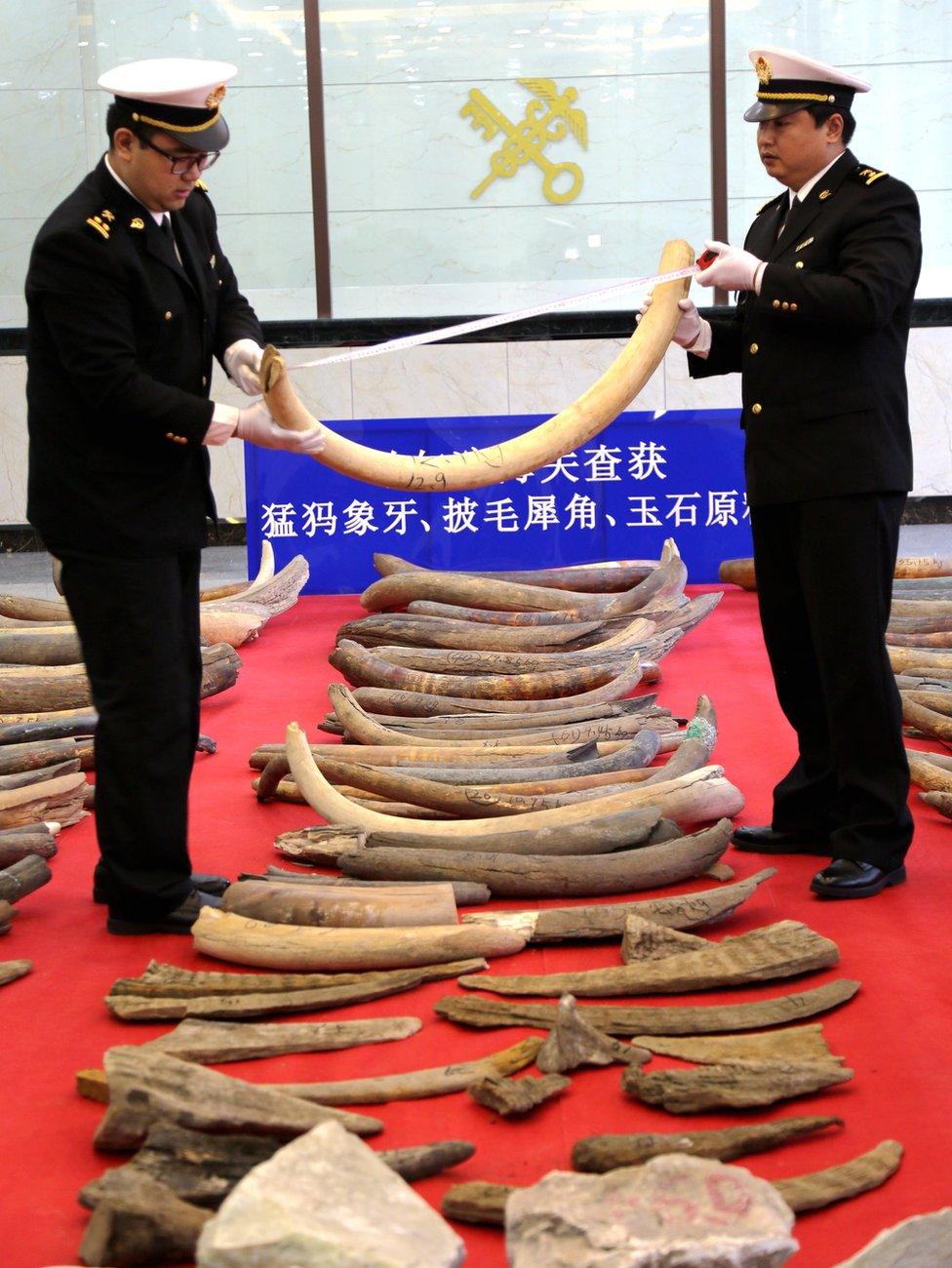
The tusks were seized in February but were shown to media earlier this week
The truck driver is alleged to have claimed he was only carrying soybeans, and to have fled the scene when the truck was inspected.
He and another person were later arrested.
Listen: The growing and legal trade in mammoth ivory (BBC Radio 4)
DNA clues to why woolly mammoth died out
There are estimated to be around 10 million mammoths that "remain incarcerated within the permafrost of the Arctic tundra", according to Douglas MacMillan, a professor of conservation and applied resource economics at the University of Kent.
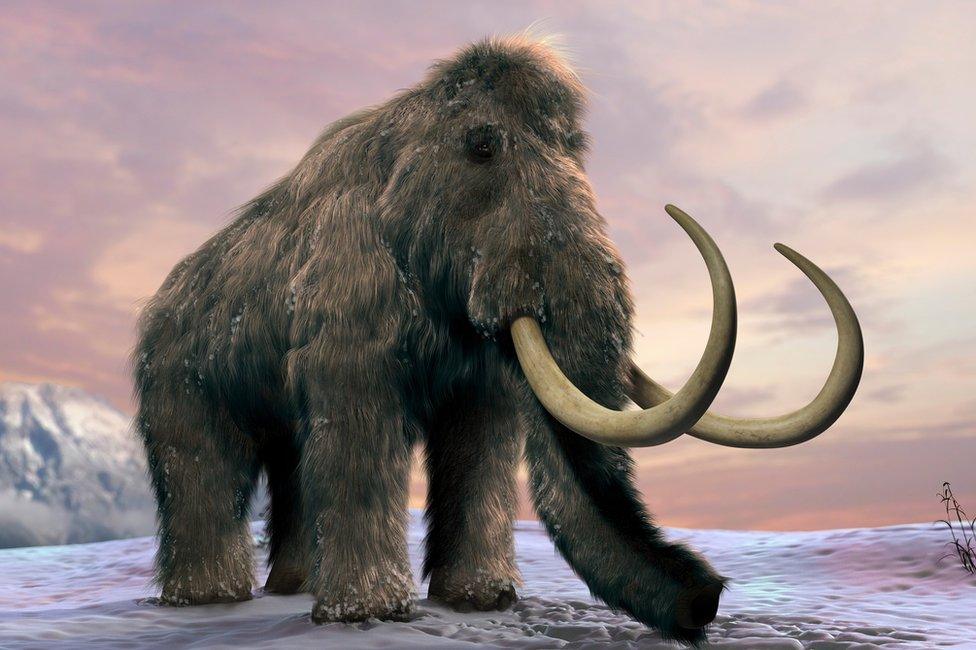
Most of the world's woolly mammoths had died out by about 10,500 years ago
Some mammoth experts have suggested that the trade in mammoth ivory should be banned, even though the animals are extinct. They argue that their tusks are often sold as elephant tusks, and thus encourage overall demand for ivory.
It is estimated that more than 50% of the ivory sold into China, which has has the biggest ivory market in the world, is mammoth ivory. Hong Kong is a major destination, and the ivory is used to make jewellery and other objects, including ornamental tusks.
But other experts like Prof MacMillan, external say that a ban would not halt the trade but rather "drive it underground and attract the attention of organised crime groups".
Most of the world's woolly mammoths had died out by about 10,500 years ago. Scientists believe that human hunting and environmental changes played a role in their extinction.
China has announced a ban on all elephant ivory trade and processing activities by the end of 2017.
Woolly mammoths died out because of "mutational meltdown", Dr Rebekah Rogers tells The World Tonight
- Published17 June 2016

- Published2 August 2016

- Published8 March 2012
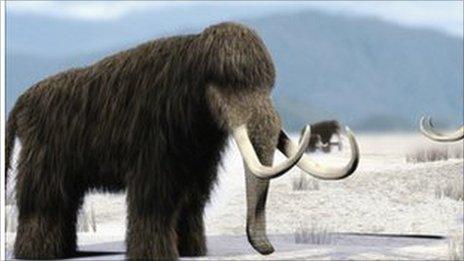
- Published3 March 2017
